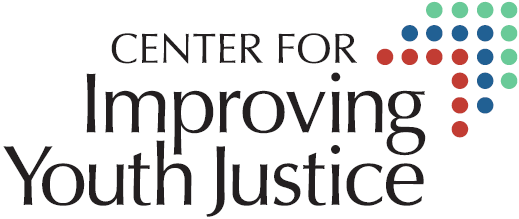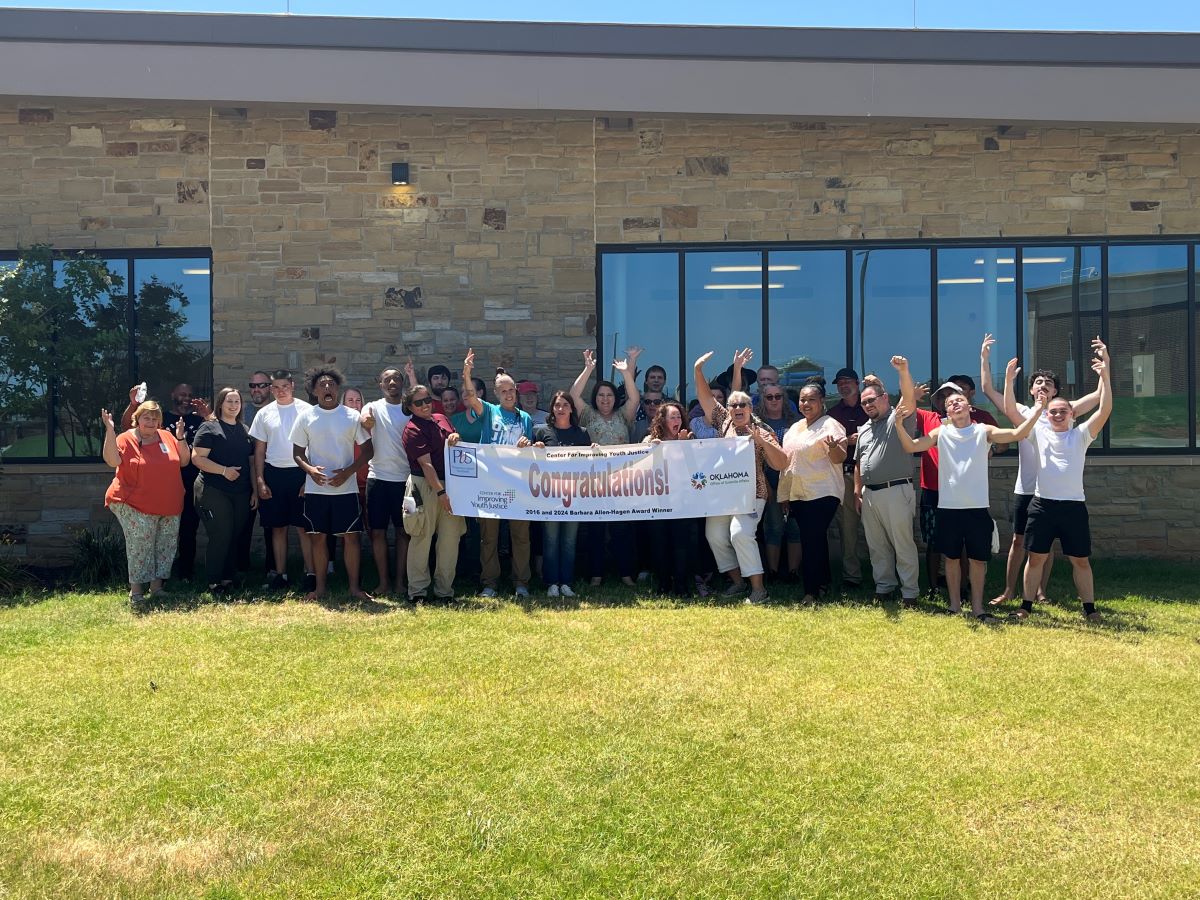Demolishing buildings and new construction at the Central Oklahoma Juvenile Center (COJC) posed significant challenges for the 64-bed, 100-acre plus secure treatment facility located about 40 northwest of Oklahoma City. The challenges grew as the Office of Juvenile Affairs (OJA), the agency responsible for state youth justice secure care facilities, closed the two other state-run secure facilities and relocated the residents to COJC, all amidst the COVID-19 pandemic. Rivalries and community disputes moved onto the campus, and at the same time, staff shortages and construction limited options for separation. COJC leaders saw an alarming significant increase in both assaults on staff and youth assaults and fights.
COJC’s leaders turned the challenges into opportunities. They rebuilt the culture while rebuilding the campus. They infused the new structures and staff with hope and positivity. All of their hard-work resulted in being named a 2024 Center for Improving Youth Justice (CIYJ) Barbara Allen-Hagen Award winner. COJC turned to the CIYJ Performance-based Standards continuous improvement process launching a new approach to their work with young people that focused on their futures, building relationships and increasing their capacities to be successful when they leave. It is not about what you’ve done at COJC; it’s about what you can become.
COJC Superintendent Darryl Fields led the culture change at the facility with a new vision and mission statement that encouraged hope, structure and accountability. They engaged Dr. Chan Hellman, professor of social work at the University of Oklahoma and director of The Hope Research Center, to provide training on his approach to building hope as a psychological strength to overcoming trauma and adversity. When young people enter COJC, they begin on a pathway of hope. Messages of hope are visible on the walls in the new cottages and program buildings. Trained Hope Navigators facilitate groups in the four cottages helping residents create their pathways through consequences toward making better choices. A new director of Behavioral Health infused the program with evidence-based programs, including Dialectical Behavior Therapy (DBT) and a restorative justice process. COJC’s practice of “walk and talks” increased, allowing residents to choose to spend time with a staff member rather than potentially
escalate a situation. As relationships grew, violence decreased.
When staff begin working at COJC, Darryl meets them and introduces them to the Leadership Academy where they learn positive youth development, building healthy relationships and respect. They learn to speak the language of hope and model the agency’s values of positive feedback, compassion, teamwork and respect. A new staff wellness program with instant access to employee assistance is available. Overall morale is higher and turnover is lower.
In April 2024, with almost twice as many residents at COJC as in 2020 when the improvement plan was launched, assaults on staff had been reduced to just one that month, well below the field average, and the rate of youth assaults and fights had been just about cut in half.
“Hope is evident everywhere on the COJC campus – on the faces of the young men, in the words of the staff and on the walls of the new buildings,” said CIYJ Executive Director Kim Godfrey Lovett after a recent visit. “The new buildings are filled with a new positive culture of respect and relationships resulting in a very safe and healthy campus.”
Watch the video to learn more about this year’s Barbara Allen-Hagen Award corrections category winner.

